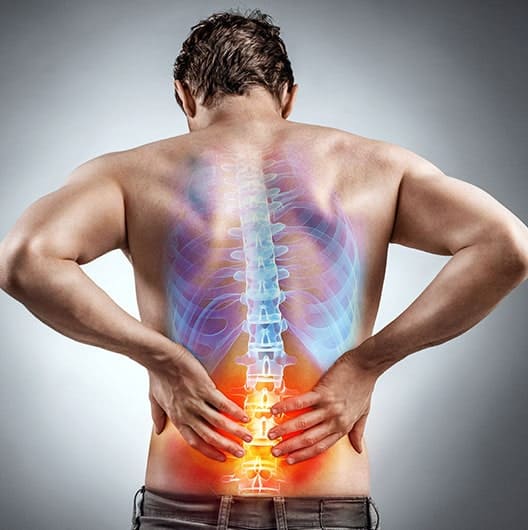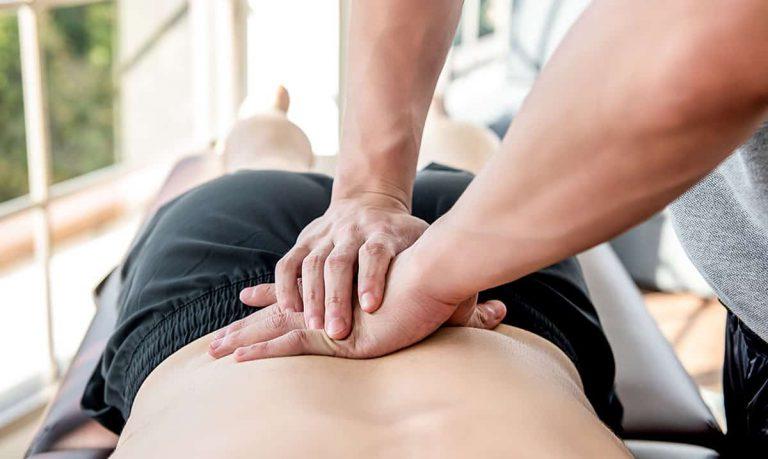
Sometimes lower back pain affects more than just your back. Depending on what’s causing your lower back pain, it may be accompanied by a wide variety of symptoms, including:
A wide variety of factors can lead to lower back pain from repetitive motion to illness to injury and many things in between. Here are some of the more common causes of lower back pain:
Less common causes of lower back pain include:
Lower back pain can strike anybody. However, there are some risk factors that make a person more susceptible to lower back pain, including:

Since the treatment for lower back pain may vary depending on what’s causing it, it’s important for a doctor or chiropractor to diagnose the cause of the back pain. Some types of lower back pain can be diagnosed with a physical exam and discussion of the symptoms, while other types of lower back pain may require additional testing to confirm a diagnosis, such as urine or blood tests, x-rays, bone scans, MRI scans, CT scans, and nerve tests like electromyograms (EMG) and nerve conduction velocities (NCV).
Treatment for lower back pain will vary widely depending on what’s causing it. A few lower back pain treatments include:
Chiropractic care involves spinal manipulation and other techniques to relieve lower back pain involving your joints, muscles, ligaments, tendons, bones, and cartilage. A chiropractor may also suggest exercises you can do at home to strengthen your back muscles or relieve your lower back pain.
Having back pain is never fun. There are so many causes of low back pain that it can be hard to determine why you are hurting. So, what is the difference between regular low back pain and a herniated disc?
Low back pain is any pain that occurs in your low back. It has a lot of causes. These include muscle strains or ligament sprains, degenerative disc diseases, joint dysfunction, osteoarthritis, and more.
Herniated discs are a cause of low back pain. They occur when there is an injury to the discs that cushion each vertebra in our spines. These discs have two layers, an inner and an outer. When the inner layer is pushed through a tear in the outer layer, the disc is said to be herniated.
Herniated discs can be asymptomatic or extremely painful. If you have symptoms of a lower back herniated disc they will include the following.
Make sure to visit a chiropractor if you begin having any or all of the symptoms listed above. You will need to begin treatment for a herniated disc immediately. In Jacksonville, FL, your source for the best-herniated disc care is Southside Chiropractic Car Injury Clinic.
Low back pain symptoms may seem to be fairly straightforward. The description is even in the name. You will likely feel pain in your lower back. However, the severity and type of low back pain can vary significantly. Here are a few of the most common signs to watch out for.
Low back pain can also come on suddenly, come and go, and develop slowly over time. The type of low back pain you have depends on the underlying condition causing the pain.
There are many treatments available for herniated discs and low back pain. Here are the common solutions to both problems.
Low Back Pain
Herniated Discs
Chiropractors can reduce all types of low back pain, including pain from herniated discs. First, they will determine the cause of your low back pain. Second, they will set out a treatment plan based on your diagnosis.
Most low back pain treatment plans, including those for herniated discs, include spinal manipulations and lifestyle changes. Your chiropractor may also recommend massage therapy. By manipulating and strengthening your spine, the chiropractor can ease your low back pain and herniate disc symptoms as well as address the underlying causes of the pain.
Contact Southside Chiropractic to learn more about our low back pain and herniated disc treatment plans.
About a third of all people who visit a chiropractor are searching for relief from back pain, including lower back pain. If you’re suffering from lower back pain, click here or call Southside Chiropractic Car Injury Clinic today at 904-497-0823 to schedule a consultation to see if we can help relieve your lower back pain.